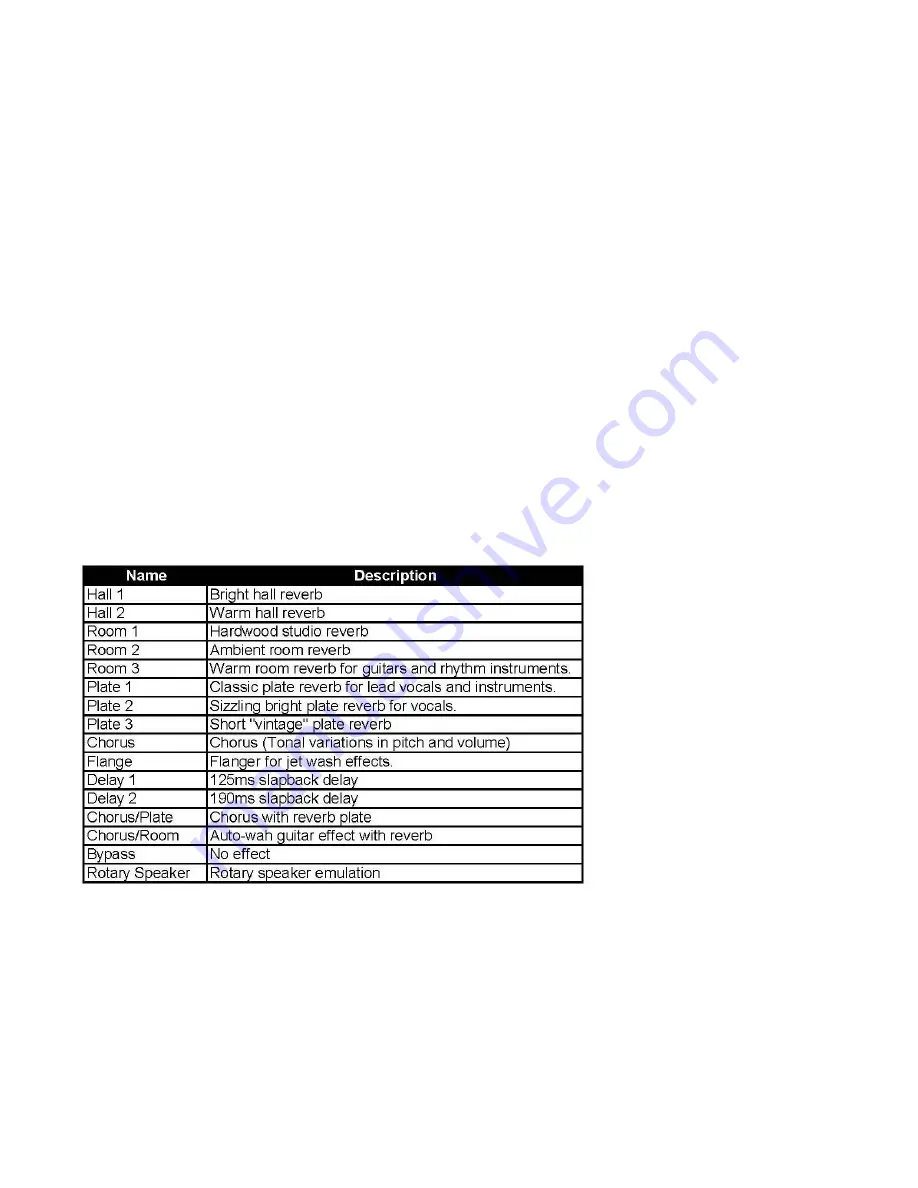
ACTIVE 3 BAND EQUALIZATION
– Each channel of the Shenandoah™ Acoustic Pro LT contains a separate 3
band (with sweepable midrange frequency) active equalizer. These equalizers, similar to those found on profes
-
sional sound consoles, are very useful tools when used correctly.
LOW FREQUENCY EQ
- The corner frequency of the low frequency section is 85 Hz, with a shelving curve type
and provides cut or boost of 15 db. This frequency is particularly handy when dealing with low frequency feedback
from a big dreadnaught guitar, cello or upright bass. With a “boomy” instrument on a small stage, a combination
of volume reduction and turning down the low frequency control will generally get good results. The low frequency
control is also handy for adding some “bottom” to a baritone sax and “chunk” to many stringed instruments.
3
COMBINING XLR & ¼” INPUTS
– A unique feature of the Shenandoah™ Acoustic Pro LT is the ability to mix the
XLR balanced and ¼” unbalanced inputs on each channel. In many situations, this effectively makes the amplifier
function as a 4-channel amplifier. The most effective way to use this feature is to set the volume on the channel
using the XLR microphone input and then adjusting the level control on the instrument itself (assuming that it has
one) to blend levels between the two inputs. Equalization will be common to both inputs on the channel.
ON-BOARD DIGITAL EFFECTS
– The Shenandoah™ Acoustic Pro LT contains two studio quality 15 program
digital effects processors. We chose industry standard digital signal processing for realistic, high quality effect
algorithms. Not all effects will be suitable for all types of instruments or playing styles, but everyone should find a
good selection of solid, useable programs. Just keep in mind that a program that doesn’t work well for your quick
acoustic guitar or mandolin work (long lush reverbs for example) may be the perfect program for jazz guitar, sax
or flute. Effects volume differences are normal when switching between different effects programs. Adjust the ef
-
fects send and master levels accordingly.
One of the most powerful features of this DSP engine is its ability to process a large amount of audio data in real-
time. This allows us to take advantage of several important concepts in generating a believable acoustic image.
By delaying a portion of the signal by an “early reflection ratio”, applying DSP processing to this signal, then sum
-
ming it back with the original signal and returning the mix to the program bus, the resulting sound is big, lush and
exceptionally stable. A ¼” TRS effects cancel jack is provided on the back panel to mute the internal effects via
footswitch. Any standard 2-button latching footswitch may be used. The effects signal is muted when the switch is
closed, shorting tip (or ring) to sleeve.
PROGRAM DESCRIPTION

























